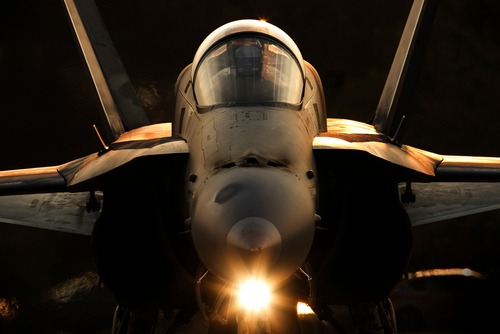
Marines and Navy personnel are espousing the benefits of the service branches recently completing joint Pacific tactical training exercises off the coast of Okinawa, Japan.
The 1st Marine Aircraft Wing and the Navy’s 7th Fleet simulated strikes on naval targets. Over six days, the participating aircraft platforms included the F/A-18 (C, E, and F variants), E-2D, and KC-130J. Three separate locations in the Indo-Pacific were used for the exercises: Okinawa, mainland Japan, and the USS Carl Vinson.
“This training offered a vital opportunity to practice lethal maritime actions with elements of the Navy and Marine Corps operating against a peer adversary,” Lt. Col. Jeremy Siegel, current operations officer for 1st MAW and lead planner for this exercise, said. “This was extremely valuable because it allowed us to further refine our tactics, techniques, and procedures for carrying out joint maritime strikes, and it also provided us the opportunity to practice command and control of a diverse organizational structure.”
Indo-Pacific domestic forces often train and rehearse maritime mission sets as a means of maintaining preparedness to execute a range of tasks in a region characterized by oceans, seas, and waterways.
“The U.S. Navy is committed to consistent forward presence in the Indo-Pacific region,” Rear Adm. Dan Martin, commander, Carrier Strike Group One, said. “As part of the larger U.S. Joint Force and alongside our allies and partners, our strategy is simple – develop and maintain warfighting capabilities, readiness, and sustainment necessary to guarantee freedom in the maritime domain. We train and rehearse so that, if necessary, we can act in the global community’s interest in upholding the rules-based international order that has ensured the sovereignty and prosperity of all nations.”




